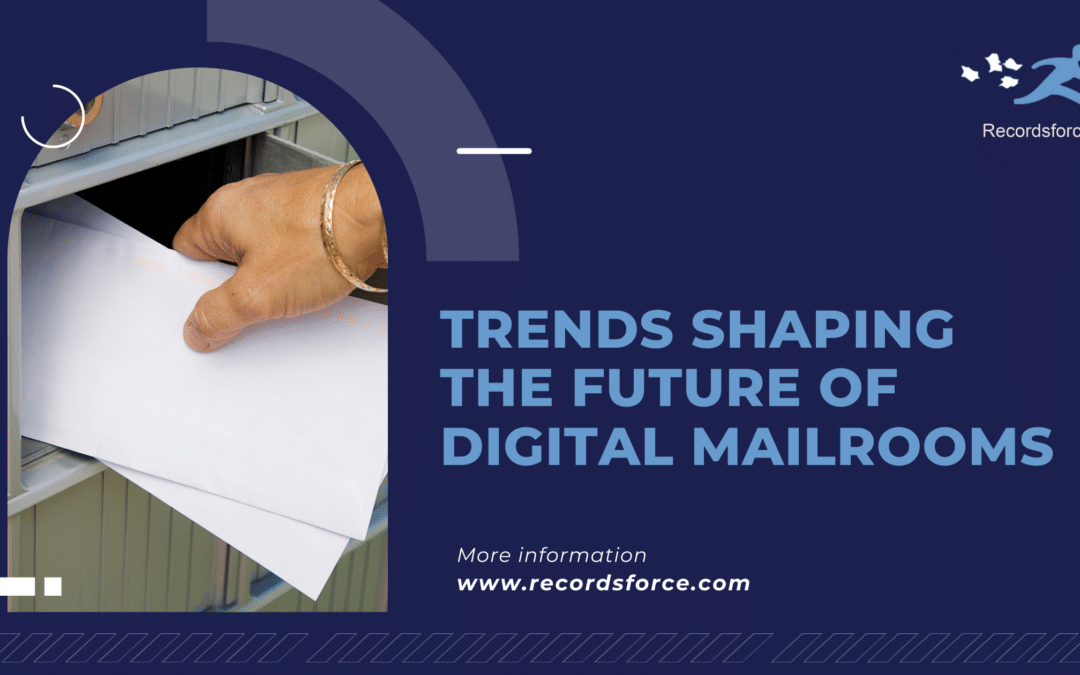As the business world continues to evolve, so too do the tools and processes that keep it running smoothly. One of the most transformative changes in recent years has been the rise of digital mailrooms. These innovative solutions are revolutionizing the way organizations handle incoming mail and documents, driving efficiency, reducing costs, and enhancing security. Let’s explore the emerging trends and innovations that are shaping the future of digital mailrooms.
1. Artificial Intelligence and Machine Learning
Artificial Intelligence (AI) and Machine Learning (ML) are at the forefront of digital mailroom innovation. These technologies enable the automation of mail sorting, data extraction, and routing processes, significantly reducing the need for manual intervention. AI-powered systems can learn and improve over time, becoming more accurate and efficient in identifying document types and extracting relevant data. This leads to faster processing times and improved accuracy, allowing businesses to operate more smoothly and respond more quickly to important communications.
2. Enhanced Security Measures
With the increasing volume of sensitive information being handled digitally, security has become a top priority for digital mailrooms. Innovations in encryption, secure access controls, and advanced authentication methods are being integrated to protect confidential information from unauthorized access and cyber threats. Additionally, blockchain technology is being explored for its potential to create immutable records, ensuring the integrity and traceability of documents.
3. Integration with Cloud Services
The integration of digital mailrooms with cloud services is transforming how businesses manage and store their documents. Cloud-based solutions offer scalability, flexibility, and remote accessibility, enabling employees to access critical information from anywhere, at any time. This is particularly beneficial for organizations with distributed workforces or those that have adopted remote working arrangements. Moreover, cloud integration facilitates seamless collaboration and sharing of documents, enhancing overall productivity.
4. Intelligent Document Processing (IDP)
Intelligent Document Processing (IDP) combines AI, ML, and natural language processing (NLP) to automate the extraction of data from various document formats, including handwritten notes, PDFs, and scanned images. IDP solutions can recognize and interpret complex data patterns, making it easier to process unstructured information. This trend is driving significant improvements in efficiency and accuracy, reducing the time and effort required to manage and process large volumes of documents.
5. Improved Customer Experience
As businesses strive to deliver exceptional customer experiences, digital mailrooms are playing a crucial role in enhancing communication and responsiveness. By automating routine tasks and streamlining workflows, digital mailrooms enable faster response times to customer inquiries and requests. This leads to improved customer satisfaction and loyalty. Additionally, the ability to track and monitor the status of incoming and outgoing communications provides greater transparency and accountability.
6. Sustainability and Green Initiatives
The shift towards digital mailrooms is also aligned with sustainability goals. By reducing reliance on physical mail and paper-based processes, businesses can significantly decrease their environmental footprint. Digital mailrooms contribute to the reduction of paper waste, lower carbon emissions from transportation, and decreased energy consumption associated with physical document storage. As environmental concerns continue to grow, organizations are increasingly adopting digital solutions to support their green initiatives.
7. Advanced Analytics and Reporting
Data is a valuable asset in today’s business landscape, and digital mailrooms are leveraging advanced analytics and reporting capabilities to extract actionable insights. These tools enable organizations to monitor key performance metrics, identify trends, and optimize their mailroom operations. By analyzing data on mail volume, processing times, and error rates, businesses can make informed decisions to enhance efficiency and drive continuous improvement.
Conclusion
The future of digital mailrooms is bright, driven by cutting-edge technologies and innovative solutions that are transforming the way organizations handle their mail and documents. From AI and ML to cloud integration and sustainability initiatives, these trends are shaping a more efficient, secure, and responsive mailroom environment. By embracing these advancements, businesses can stay ahead of the curve, enhance their operations, and deliver superior value to their customers.
At Recordsforce, we are committed to helping businesses navigate the evolving landscape of digital mailrooms. Our state-of-the-art solutions are designed to streamline your mailroom operations, improve efficiency, and ensure the highest levels of security. Contact us today to learn more about how we can support your digital transformation journey.

